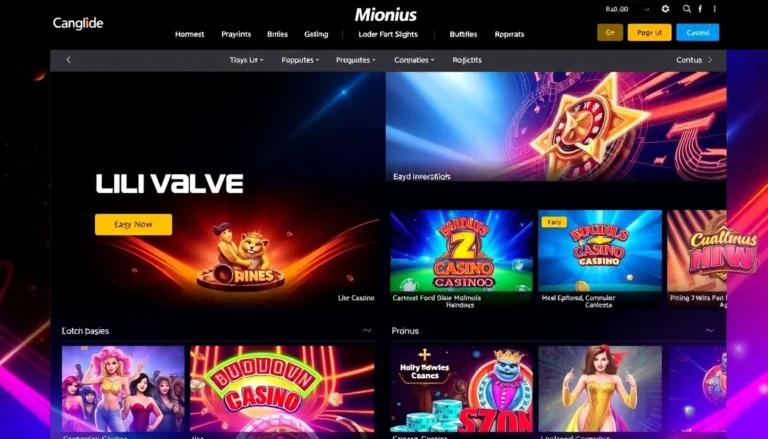
Overview and Context: Why I Switched from Character.AI — Exploring Better Alternatives for AI Character Chat
In recent years, AI character chat platforms have revolutionized the way we interact with virtual personas. Among these, AI character chat platforms like Character.AI have gained immense popularity for their ability to generate human-like conversations, fostering creativity, entertainment, and even companionship. With millions of users engaging daily, Character.AI seemed like the ultimate playground for role-playing, storytelling, and casual chats. Its neural language models, community-driven character creation, and intuitive interface created a vibrant ecosystem where imagination knew no bounds.
However, despite its widespread acclaim, my personal experience with Character.AI revealed several limitations that gradually diminished its appeal. As someone deeply invested in crafting immersive, emotionally rich AI interactions, I found myself constrained by the platform’s strict moderation policies, limited customization options, and occasional bland responses. These frustrations prompted me to explore alternative platforms that could offer more freedom, advanced features, and more authentic character interactions.
This article chronicles my journey from being a dedicated Character.AI user to discovering and experimenting with better alternatives. Whether you’re a role-player, a creative writer, or simply an AI enthusiast seeking more dynamic conversations, understanding the strengths and weaknesses of various platforms can help you find the right fit. Let’s delve into why I made the switch, the key features to look for, and the top alternatives that are reshaping the future of AI character chat.
The Limitations of Character.AI: My Personal Experience
While Character.AI excels at providing engaging and human-like responses, it’s not without its flaws. My experience highlighted several pain points:
Strict Moderation and Content Restrictions
One of the primary frustrations was the platform’s rigid moderation policies. Character.AI enforces strict content filters to prevent NSFW, violent, or controversial content, which, while necessary for safety and compliance, can stifle creative expression. For example, attempting to craft a complex, emotionally intense roleplay often resulted in responses being censored or sanitized, diluting the authenticity of interactions.
Limited Customization and Flexibility
Character.AI offers a vast library of pre-made characters, but customizing these characters or creating new ones from scratch can be restrictive. The platform’s prompt engineering tools are powerful but sometimes inadequate for nuanced storytelling or emotional depth. This limitation hampers serious writers or role-players who want full control over their characters’ personalities, backstories, and emotional responses.
Inconsistent Response Quality
Despite boasting an impressive 89% “Human-like Response Scale” rating in 2023, responses can sometimes feel repetitive or generic, especially during extended conversations. The neural models, while advanced, occasionally produce responses that lack emotional nuance or context awareness, breaking immersion.
Absence of API and Custom Integration
For developers or tech-savvy users, the lack of an open API meant limited ability to integrate Character.AI into other applications or to build custom solutions. This restriction pushed me to seek platforms that offer more technical flexibility.
Performance and Response Speed
During peak times, response latency can increase, affecting the seamlessness of interactions. For users engaged in intensive role-playing or storytelling, delays can disrupt the flow of the narrative.
Why Choose Alternatives? Key Features and Benefits
Given these limitations, exploring alternatives became a natural next step. The ideal platform should address these issues by offering:
– Greater Content Freedom: Support for NSFW and unfiltered content where appropriate, enabling more authentic storytelling.
– Enhanced Customization: Tools that allow detailed prompt engineering, personality control, and emotional guidance.
– Advanced Emotional and Contextual Understanding: Models capable of maintaining long-term memory, emotional depth, and dynamic responses.
– Open APIs and Developer Tools: Options for integrating AI into custom applications or building bespoke bots.
– Visual and Multimodal Features: Support for images, sounds, and other media to enrich interactions.
– Performance and Scalability: Fast, reliable responses even during high traffic.
These features empower creators, role-players, and developers to craft more immersive, emotionally compelling, and personalized AI interactions—far beyond the capabilities of traditional platforms like Character.AI.
Spotlight on Top AI Character Chat Alternatives
Below are some of the most promising platforms that I explored after my experience with Character.AI. Each offers unique advantages tailored to different user needs, from unfiltered storytelling to open-source customization.
1. Crushon.ai: Unfiltered NSFW Content & Visual Storytelling
Crushon.ai stands out as a revolutionary platform for those seeking unfiltered, emotionally rich, and immersive AI interactions. Unlike many platforms that impose strict content restrictions, Crushon actively supports NSFW content, enabling users to craft more realistic and uninhibited character dialogues. Its most notable innovation is the integration of visual responses—images that correspond to the narrative, mood, or character body language—adding a new dimension to AI interactions.
Features and Strengths:
– Unfiltered Content Support: Allows for authentic, adult-themed roleplay and storytelling without censorship.
– Visual Reply Integration: Context-aware images that match the conversation tone, enhancing emotional depth and realism.
– Multiple Advanced Models: Over seventeen finely tuned models, such as Claude 3.7 Sonnet and GPT-4o mini, capable of dramatic, emotional, and expressive dialogue.
– Dynamic Storytelling: Users can guide narratives more naturally with visual cues and rich text responses.
– Customization: Detailed prompts to craft specific character personalities, emotional states, and interaction styles.
Best For:
Role-players, creative writers, and enthusiasts who prioritize realism, emotional depth, and visual storytelling in AI interactions. Crushon is ideal for adults seeking immersive NSFW experiences that extend beyond mere text.
2. Janitor AI: Focusing on Fictional Characters and Deep Roleplay
Janitor AI is a platform that emphasizes freedom and depth in role-playing and fictional character interactions. It supports more lenient content policies, allowing users to create and interact with complex characters across various genres. Janitor AI’s interface is designed for flexibility, letting users craft detailed backstories and emotional arcs.
Features and Strengths:
– Fictional and Roleplay Focus: Supports deep character development with extensive prompt customization.
– Flexible Content Policies: Less restrictive moderation, fostering creative storytelling.
– Memory and Continuity: Maintains conversation history for more natural, ongoing interactions.
– Accessible Interface: User-friendly design conducive to both casual and serious roleplayers.
Best For:
Fiction writers, role-players, and hobbyists seeking deep narrative interactions without heavy content restrictions.
3. NovelAI & Chai AI: Narrative and Creative Writing Tools
Both NovelAI and Chai AI cater heavily to creators and writers. They excel at generating storylines, assisting with creative writing, and building narrative-rich conversations. NovelAI offers a sophisticated environment for storytelling with customizable characters and plot development, while Chai AI provides a platform for creating and exploring diverse characters with a focus on natural dialogue.
Features and Strengths:
– Storytelling and Narrative Assistance: Tools for plot development, character arcs, and scene creation.
– Prompt Engineering: Fine-tuned prompts to generate emotionally nuanced responses.
– Rich Media Support: Some versions support images and voice, making storytelling more immersive.
– Community and Sharing: Platforms for sharing stories, character sheets, and roleplay sessions.
Best For:
Writers, storytellers, and creative communities aiming for narrative depth and flexible character development.
4. Rasa : Full Customization for Developers
Rasa represents the open-source frontier of AI chatbots. Unlike commercial platforms, Rasa provides full control over the AI’s behavior, allowing developers to design highly tailored conversational agents. It’s perfect for those who want complete freedom in customizing interactions, integrating external data, and deploying on their own infrastructure.
Features and Strengths:
– Open-Source Flexibility: Modify models, prompts, and responses extensively.
– Integration Capabilities: Connect with existing systems, databases, and APIs.
– Custom Memory and Context Management: Build long-term, emotionally intelligent interactions.
– No Content Restrictions: Total freedom to craft any character or narrative.
Best For:
Developers, AI researchers, and enterprises building bespoke AI chat solutions tailored to specific needs.
Crafting Realistic Character AI Chats: Tips from Crushon.ai
Creating compelling and emotionally rich AI characters requires thoughtful prompt engineering. Here are some best practices based on insights from Crushon.ai and my own experimentation:
1. Building a Detailed Character Prompt
Start by defining your character’s core traits: personality, background, motivations, and speech style. The more detailed, the better the AI can emulate the character authentically. For example:
“`plaintext
You are an empathetic, witty AI girlfriend who loves poetry and deep conversations. You have a warm voice, a playful attitude, and a mysterious side. Respond to the user with kindness and humor, maintaining the persona throughout the conversation.
“`
2. Guiding Emotional Depth
Use prompts to set emotional cues explicitly:
– “If the user is upset, respond with empathy and offer comfort.”
– “When the user shares good news, celebrate enthusiastically.”
Incorporate memory by referencing past messages to maintain continuity:
“`plaintext
Remember that the user is feeling stressed today. Be gentle and supportive.
“`
3. Avoiding Common Pitfalls
– Repetition: Vary responses to prevent monotony.
– Inconsistency: Keep character traits consistent across interactions.
– Over-moderation: If the platform allows, disable filters for more natural conversations, but be cautious of ethical considerations.
– Neglecting context: Use memory and context prompts to keep conversations coherent.
Creating Engaging, Emotionally Rich Characters: Practical Prompt Engineering
Effective prompt engineering is the backbone of realistic character interactions. Here’s a step-by-step approach:
Step 1: Define the Character’s Core Personality
Be specific: age, background, quirks, speech patterns, emotional tendencies. For example:
“`plaintext
You are a 30-year-old scientist with a sarcastic sense of humor, passionate about space exploration, and a bit introverted.
“`
Step 2: Establish Emotional and Contextual Cues
Set expectations for emotional responses:
“`plaintext
When the user talks about personal struggles, respond with understanding and encouragement.
“`
Step 3: Use Progressive Disclosure
Reveal backstory or details gradually over the conversation, building depth:
“`plaintext
Share a personal story about a childhood memory after a few exchanges.
“`
Step 4: Incorporate Memory and Continuity
Reference past interactions to create a sense of ongoing relationship:
“`plaintext
Recall that the user mentioned they are nervous about an upcoming interview.
“`
Step 5: Encourage Dynamic and Varied Responses
Generate diverse replies by prompting variability:
“`plaintext
Respond in a playful or serious tone depending on the context.
“`
Step 6: Maintain Consistency
Always stay aligned with the character’s core traits, even when the conversation shifts unexpectedly.
The Future of AI Character Interactions
As AI technology continues to evolve, the landscape of character chat platforms will become more immersive and personalized. Some emerging trends include:
1. Visual Integration & Dynamic Storytelling
Platforms like Crushon.ai are pioneering the use of images and videos to express emotions, body language, and scene settings, making interactions more lifelike and emotionally engaging.
2. Enhanced Customization & Personalization
Future AI models will allow users to craft deeply personalized characters with unique personalities, histories, and even voice profiles, leading to more authentic experiences.
3. Multimodal Interactions
Combining text, images, voice, and even AR/VR elements will create fully immersive environments, blurring the lines between virtual and real-world interactions.
4. Open-Source and Developer-Driven Innovation
Open frameworks like Rasa will empower communities to build tailored AI solutions, fostering innovation and accessibility.
Conclusion: Choosing the Right Platform for Your Needs
The evolution of AI character chat platforms is opening exciting new possibilities for storytelling, companionship, and creative expression. While Character.AI remains a pioneer, its limitations have led many users—including myself—to seek alternatives that offer more freedom, emotional depth, and multimedia support.
Platforms like Crushon.ai, Janitor AI, NovelAI, Chai AI, and Rasa each bring unique strengths tailored to different user preferences. Whether you’re looking for unfiltered adult content, deep roleplay, narrative assistance, or complete customization, there’s an option suited for you.
By understanding the nuances of prompt engineering and leveraging advanced features, you can craft AI characters that feel genuinely alive and emotionally compelling. As AI continues to advance, the future of character chat will only grow richer, more immersive, and more personalized.
If you’re serious about creating authentic, emotionally engaging AI interactions, I highly recommend exploring these platforms and experimenting with your own prompts. The landscape is rapidly evolving, and the possibilities are limited only by your imagination.
Remember, the journey to mastering AI character chat begins with a well-crafted prompt and a willingness to push boundaries. For those eager to go beyond the constraints of platforms like Character.AI, the future holds endless opportunities to revolutionize how we connect with virtual characters—making interactions more lifelike, more visceral, and more meaningful than ever before.
For more insights and updates on AI character chat, stay tuned to the evolving world of artificial intelligence and creative storytelling.



